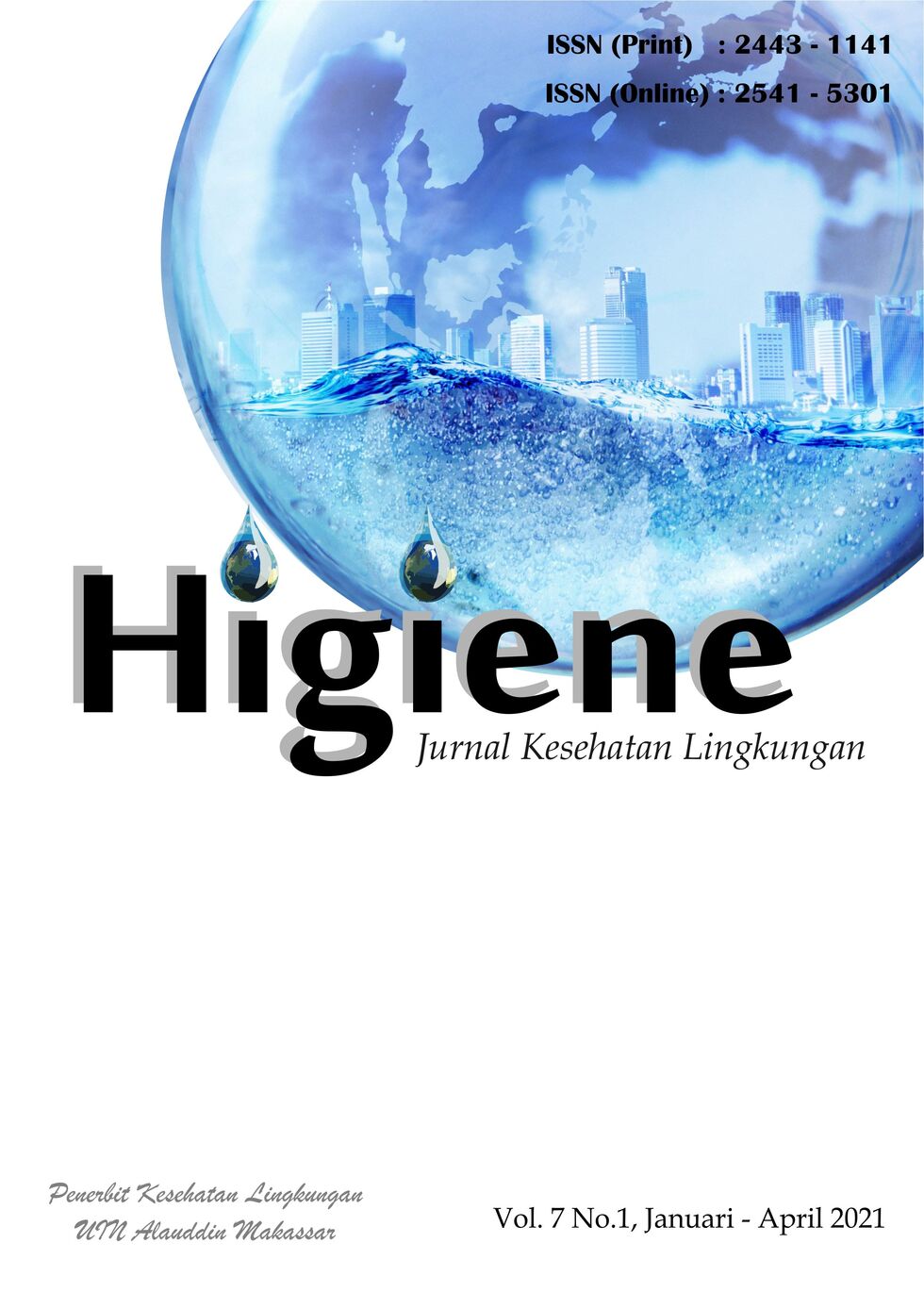The Relationship Between Dengue Hemorrhagic Fever and Climate Change in Wajo District 2015-2019
Abstract
Dengue Hemorrhagic Fever (DHF) is an acute febrile disease caused by the dengue virus which enters human circulation through the bite of the aedes aegypti mosquito. Significant climate change that occurs over a certain period of time. In other words, climate change is also defined as changes in temperature, rainfall, wind speed and so on. This study aims to determine the relationship between the incidence of dengue hemorrhagic fever and climate change in Wajo Regency. This type of research is an analytical study with a correlation design in which to see the relationship between one variable and another. The results of this study indicate that there is a significant relationship between air temperature, rainfall, humidity and the incidence of dengue bleeding (p = 0.001 and r = -0.403), (p value = 0.001 and r = 0.403), (p value = 0.002 and r = 0.533) and there was no significant relationship between wind speed and the incidence of dengue hemorrhagic fever (p value = 0.632 and r = 0.057). It is hoped that in future studies using different designs, data sources, locations and variables and using all other climate variables that are thought to have a relationship with the incidence of dengue hemorrhagic fever. And secondary data used is longer.Keywords : Dengue Haemorrhagic Fever occurrence, air temperature, rainfall, humidity, wind speed
References
Ade Yuniarti, (2015). Hubungan Iklim (Curah Hujan, Kelembaban dan Suhu Udara) dengan Kejadian Penyakit Demam Berdarah Dengue (DBD) di Kota Administrasi Jakarta Timur, Skripsi: Universitas Indonesia.
Amah Majidah V, (2016), Hubungan Faktor Iklim dan Angka Insiden emam Berdarah Dengue di Kabupaten Serang, Skripsi: Universitas Indonesia.
Budioro B, (2017), Pengantar Ilmu Kesehatan Masyarakat, Semarang: Badan Penerbit Universitas Diponegoro.
Departemen Kesehatan Republik Indonesia. (2014), Penemuan dan Tatalaksana Penderita Demam Berdarah Dengue, Jakarta: Dirjen PL.
Junghans Sitorus, (2016). Hubungan Iklim dengan Kasus Penyakit Demam Berdarah Dengue (DBD) di Kotamadya Jakarta Timur Skripsi: Universitas Indonesia.
Thomas Suroso, dkk, ed.(2015). Pencegahan dan Penanggulangan Penyakit Demam Dengue dan Demam Berdarah Dengue, Terjemahan, WHO dan Depkes RI, Jakarta.
Widya H Cahyati,(2017). Dinamika Aedes Aegypti sebagai Vektor PenyakitKemas,Volume II, No 5
Saleh, M., Aeni, S., Gafur, A., & Basri, S. (2018). Hubungan Pemberantasan Sarang Nyamuk (PSN) dengan Keberadaan Jentik Nyamuk Aedes aegypti di Wilayah Kerja Puskesmas Pancana Kab. Barru. Higiene, 4(2), 93-98.
Soedarto, (2013). Penyakit-Penyakit Infeksi di Indonesia, Jakarta, Widya Medika.
Wandar Toni, Suroso Thomas, (2000). Upaya Peningkatan Partisipasi Keluarga dalam Pemberatasan Sarang Nyamuk Demam Berdarah Dengue (PSN DBD) di Wilayah Kerja Puskesmas Pancoran Mas, Depok dalam Majalah Kesehatan Masyarakat, Nomor 63.
Copyright (c) 2021 HIGIENE: Jurnal Kesehatan Lingkungan

This work is licensed under a Creative Commons Attribution 4.0 International License.


